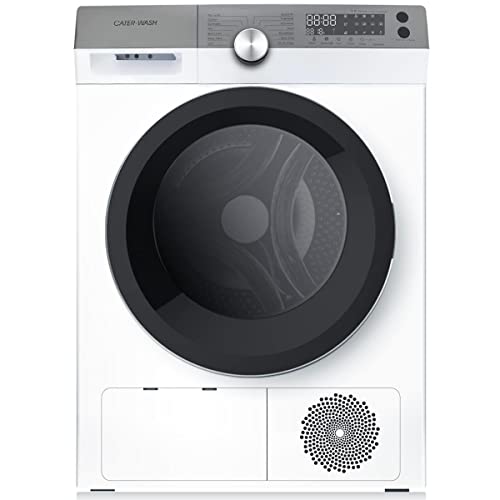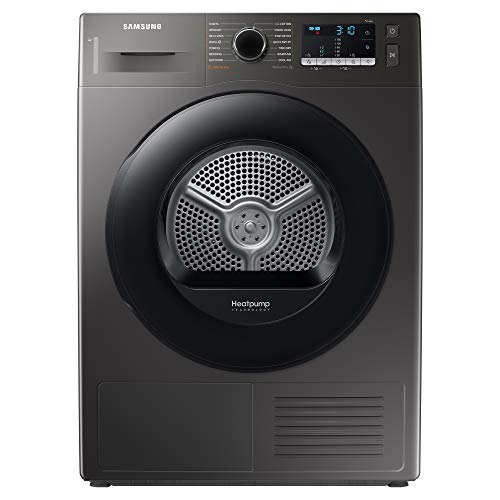Why Do So Many People Are Attracted To Heatpump Dryer?
페이지 정보

본문
 How to Properly Use a Heatpump Dryer
How to Properly Use a Heatpump DryerHeat pump dryers use electricity to move the water from the fabric to the compressor. The moisture is then dehumidified, and then heated up in the cycle which results in a low-temperature drying process.
ENERGY STAR lists several 4-cubic-foot dryers that are smaller than traditional American standard-sized dryers (which typically have seven cubic feet). The smaller sizes are less bulky and may be eligible for rebates in a few states.
Energy Efficiency
A heatpump dryer is well-known for its energy efficiency. It uses air energy to dry clothes and does not generate waste heat like conventional dryers. As a result, heatpump dryers can save homeowners up to $600 in energy costs over the course of the life of the appliance. The use of renewable resources can also make them less environmentally harmful than traditional dryers.
The energy efficiency of a heater is determined by the COP (coefficient of performance) of the unit, which is the proportion of its cooling capacity to the power consumption. The higher the COP, the more efficient the heat pump is. This is why dryers with heatpump have a lower kilowatt per hour consumption than traditional dryers.
In addition to reducing energy consumption, the lower temperature of the heat pump dryer also reduces drying time by increasing the capacity of dehumidification of the system. Jia et al. (1993) evaluated a combination heat pump and microwave dryer with loop thermosyphons for low temperature grain drying. They discovered that the system used less than 2.1 MJ per kg of water removed.
Heat pumps can be employed in combination with other drying methods to increase energy efficiency. For instance atmospheric freeze drying can be coupled with a heat pump to produce a process that is more cost-effective than vacuum freeze drying and produces products similar to those produced by vacuum freeze drying (Bantle and others. 2009).
While the initial cost of a heatpump dryer may be greater than a standard dryer, many rebate programs offer incentives for purchasing these appliances. For instance the IRA's Energy Star program provides rebates to homeowners who have cut their whole-home energy usage by 35 percent or more. This helps to make the initial cost of a washer and dryer more affordable for families with smaller budgets.
If you are looking for the highest efficiency in energy usage, a high-efficiency heatpump dryer is a good option. It is estimated that a heatpump dryer can reduce energy consumption by more than 40% when compared with traditional dryers, making it one of most efficient ways to dry clothes at home.
Convenience
These dryers, which are relatively new in the United States are gaining popularity because of their energy efficiency and climate-friendly benefits. They are also gentler on clothes, as they utilize lower temperatures to dry them and moisture sensors stop them from overheating. These features can help reduce shrinkage and damage to clothing making them more affordable than traditional electric dryers.
The closed-loop system dryers using heat pumps use to capture moisture and reuse air is what sets them apart from other models. Instead of heating and then dumping hot air and heatpump dryer water into the air through exhaust vents, they utilize refrigerant and compressor to recycle the same air, and then capture excess moisture.
The procedure is similar to that of a refrigerator in that the compressor heats the air, then transfers it to an evaporator that is cold. The water vapor then condenses in a pan. The dry air is recirculated back into the drum, and the excess moisture is pumped to a drain pan. The condensation drain hose is connected to the sewer line in your home, eliminating the need for a vent.
The heat pump dryers cut down on energy costs and are quieter. Some models even have sound-dampening technologies for added convenience. They're also less trouble to maintain than conventional dryers. Since they don't require a vent to work they're equipped with fewer parts and less potential for breakage. They don't need gas lines, as do vented dryers. This can be expensive to replace or repair.
The only downside to convenience is that heat pump dryers generally take longer to dry than traditional models. This is because they operate at lower temperatures and could require several times before getting the laundry completely dry. This can be compensated by reducing power consumption or using energy-efficient modes.
The Miele T1 heat pump dryer, for instance can save up to 60% in energy consumption and has a lower noise level thanks to its vibration reduction system. It also comes with smart features such as EcoDry or PerfectDry that analyzes the calcium content in your water to ensure safe and consistent drying. The dryer is Wi-Fi-compatible and can be controlled remotely by using a smartphone app.
Easy Installation
A heat pump dryer makes use of an air compressor to transfer heat from the air into the laundry. It also doesn't require vents, so it can be put in practically anywhere in your home. This makes it a great option for tiny homes, accessory dwelling units (e.g. an apartment above the garage) and even additions. You can stack a heating dryer with a washing machine to reduce space.
This kind of dryer has the main disadvantage that it takes longer than vented dryers to dry loads. However, it's not as energy-intensive and doesn't create any unpleasant odors. It also helps reduce the amount of laundry that you wash, and keeps your clothes fresher longer.
The majority of heat pump dryers are sold in small sizes, which make them easy to install in small and tight homes. If you're looking for a large model, consider an energy STAR certified heat pump dryer with larger drums. There are also heat pump dryers that have an infrared heater that speeds up the drying process by heating the clothes and fabrics directly.
The first step to installing a heat-pump dryer is to prepare the intended installation space. To ensure proper ventilation, eliminate any clutter from the area, and close off the area around the dryer. Then, you must prepare the power outlet by ensuring that it is only for this appliance. Make sure that the voltage and amperage match the specifications of the user manual. Connect the dryer to an outlet that is powered by electricity and run a test cycle. Finally, clean the lint filters after every use. Also, check and clean the exhaust hose to avoid clogging and maintain performance.
To get the most out of your dryer's heating element, follow the manufacturer's instructions for load size and temperature. This will allow your machine to operate efficiently and reduce energy use. It is also essential to schedule yearly maintenance with a certified technician to ensure everything is operating efficiently. They can also examine your ductwork for obstructions or damages which could be reducing the efficiency.
Maintenance
If properly used when used properly, heat pump dryers can be an investment that is worth the home. To keep them working optimally and efficiently throughout the year they require regular maintenance, cleaning and inspections. These tips can help you extend the life of your dryer, reduce energy consumption and save money.
The condenser drain as well as the lint filters should be kept free of obstructions. To prevent clogging and reduced performance, the lint filter should be cleaned following every use. Check the vent hose regularly for kinks or blockages. A blocked vent can cause an increase in drying time and poses a significant fire risk. It is recommended to remove and clean the vent hose frequently with a dryer lint cleaner or the attachment for a vacuum cleaner to ensure that it is thoroughly cleaned, eliminating any traces of lint or debris.
It is also essential to maintain the heat exchanger's cleanliness regularly. This component transfers heat to clothes from the air and is prone to becoming blocked over time by lint, which results in an increase in efficiency and shorter cycles. The dryer's manual for the user to get specific instructions on how to access and clean the heat exchanger. Once you've cleaned your heat exchanger, wash it and dry it thoroughly before placing it back into the dryer.
Place the dryer in an area that is well-ventilated, and away from obstructions such as walls and other structures. This will ensure that the dryer is well ventilated and will prevent it from overheating.
You should also clean the exterior and drum of your dryer on a regular basis. This will help prevent stains and keeps the interior of the dryer free of dust, dirt, heatpump dryer and dirt. Use a damp cloth and mild detergent to wash the exterior of the dryer. Avoid abrasive cleaners that could damage the finish.
 It is recommended that in addition to these suggestions, you seek professional maintenance for your heat pump tumble dryer pump-dryer at least once a year. A professional can inspect and clean the internal components of your dryer, making sure they are in good working order.
It is recommended that in addition to these suggestions, you seek professional maintenance for your heat pump tumble dryer pump-dryer at least once a year. A professional can inspect and clean the internal components of your dryer, making sure they are in good working order.- 이전글It's Time To Upgrade Your Cheap Heat Pump Tumble Dryer Options 24.04.11
- 다음글Are You Getting The Most The Use Of Your Tumble Dryers Heat Pump Vs Condenser? 24.04.11
댓글목록
등록된 댓글이 없습니다.
